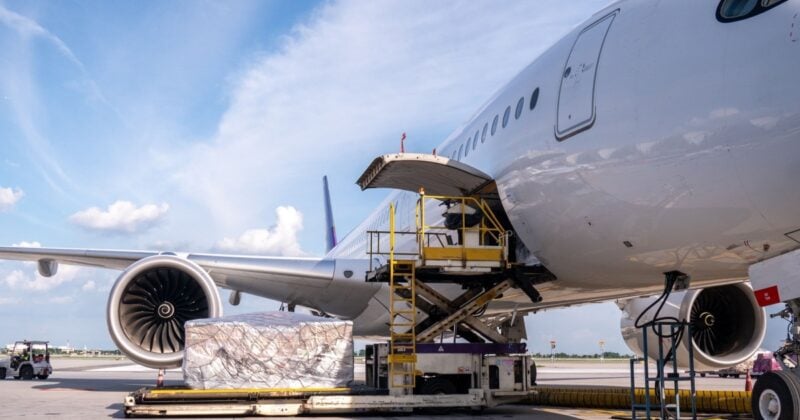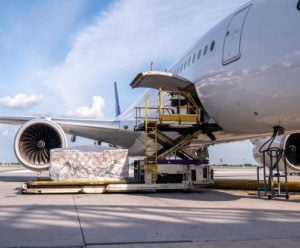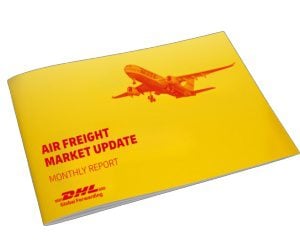
Air freight demand soars amid global volatility

Global air cargo is proving surprisingly buoyant this year, even as trade tensions and policy uncertainty weigh on sentiment.
“We’re still seeing a resilient global economy, even with ongoing policy and geopolitical uncertainties,” said Niki Frank, CEO, DHL Global Forwarding Asia Pacific. “Growth remains positive, but risks from inflation, trade tensions and energy policy shifts continue to shape the outlook.”
The scale of air cargo’s demand growth is unmistakably up. According to WACD figures shared during a DHL Air Freight Market Update webinar in late September, global demand rose about 6 percent in the first seven months of the year, driven by intra-Asia and Asia–Europe routes, with Asia–U.S. trade lagging behind.
IATA’s data told a similarly upbeat story, recording a six-month run of demand expansion through August. Total demand increased by 4.1 percent, measured in cargo tonne-km (CTK), primarily due to a shift from sea to air for high-value goods. The key reason? Shippers are trying to sidestep tariff risk emanating from the White House. The tariff uncertainty has also led to some traffic being diverted away from North America, fuelling stronger growth on Asia-Europe, intra-Asia, Asia-Africa and Asia- Middle East lanes.
The growth trinity - Asia, China Plus X and e-commerce
This shift has also seen regional demand across Asia remaining firm. "We’ve seen a sustained upward trend in air cargo across Asia Pacific, underpinned by resilient trade flows and strong intra-regional links," noted Frank. “The outlook for the coming months remains positive, with healthy growth expected on key trade lanes.”
Patrick Bongers, Global Head, Air Freight Business Development, DHL Global Forwarding, noted during the webinar that “South-East Asia and India are the clear winners in global airfreight this year, in part a result of the ongoing China Plus X shift in manufacturing.”
Technology and AI-related equipment have overtaken automotive and fashion as the main drivers of air cargo growth this year. Exports of high-tech goods rose 12 percent in the first half of 2025, adding more than 200,000 tons of airfreight demand, while temperature-controlled cargo increased 8 percent. These segments and lanes are expected to remain the most dynamic through the remainder of the year.
Despite expectations of a slowdown after changes to U.S. import rules removed de minimis exemptions on low-value parcels, Bongers highlighted that e-commerce has remained a key driver of airfreight demand. He noted that the U.S. policy shift has compelled sellers and logistics providers to reassess their models, with more traffic now flowing through B2B2C and B2B channels on trans-Pacific lanes, rather than direct-to-consumer.
Outlook amid capacity lag and ocean disruption
The flip side of resilient air cargo demand is a supply picture that continues to expand sluggishly. According to the September DHL Airfreight State of the Industry report, global air cargo capacity has been softening since May 2025, mainly due to double-digit reductions in freighter availability.
Despite some relief from passenger bellyhold capacity, it was not enough to offset the decline or drive overall growth. Thus, average rates are slightly higher than a year ago. The update also noted that spot rates have seen moderate increases, though heightened volatility is expected as carriers adjust pricing in real-time to reflect changes in demand and capacity.
Shippers, therefore, should plan for potential rate hikes during peak periods and allow for variability, especially for time-sensitive or seasonal cargo.
Air cargo could also benefit from growing disruption in ocean supply chains, according to Tom Crabtree, Managing Director, Transport Research Advisory. Crabtree noted that the rapid decline in container shipping rates and consequent capacity cuts and blank sailings by carriers will push shippers to consider air cargo options in the coming weeks.
The true test for the air freight market, however, is to maintain this momentum in the ever-evolving trade situation. "As we enter the final stretch of 2025, we remain committed to helping our customers keep up and stay airborne with the air freight market’s momentum," said Frank.
MORE FROM THIS COLLECTION














 English
English